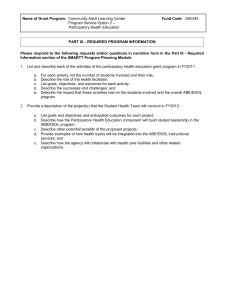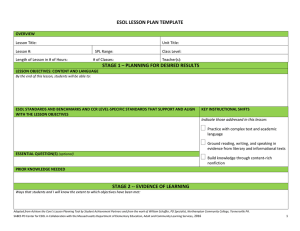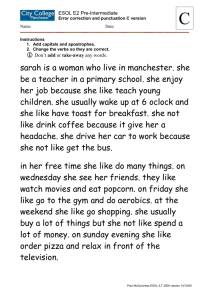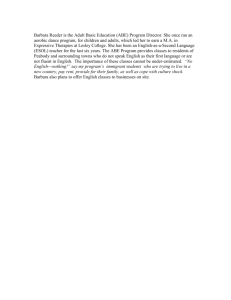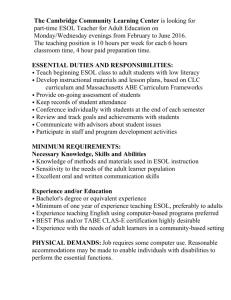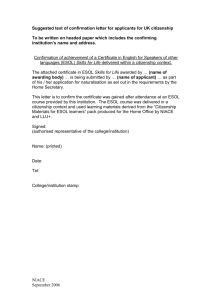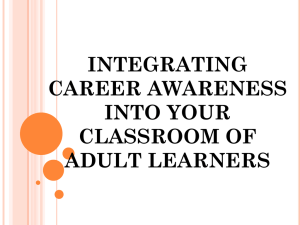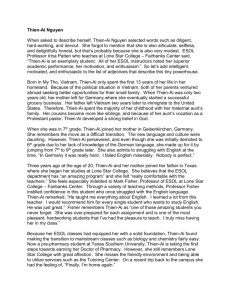Checklist for Assessing a Program ABE or ESOL Scope and Sequence
advertisement
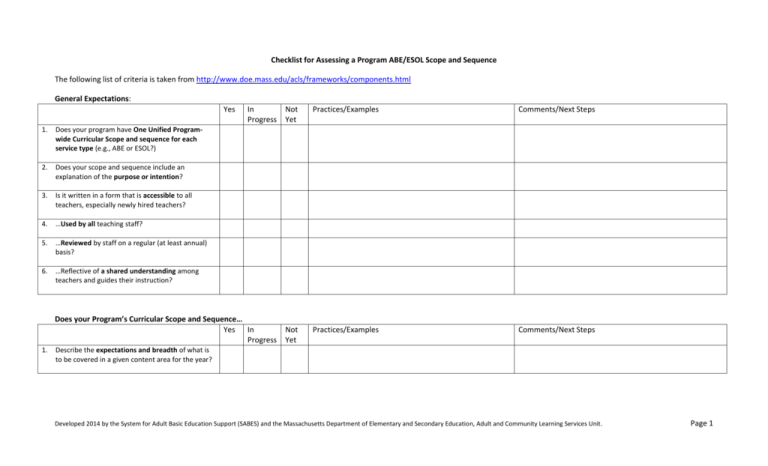
Checklist for Assessing a Program ABE/ESOL Scope and Sequence The following list of criteria is taken from http://www.doe.mass.edu/acls/frameworks/components.html General Expectations: Yes In Progress Not Yet Practices/Examples Comments/Next Steps Does your Program’s Curricular Scope and Sequence… Yes In Progress Not Yet Practices/Examples Comments/Next Steps 1. Does your program have One Unified Programwide Curricular Scope and sequence for each service type (e.g., ABE or ESOL?) 2. Does your scope and sequence include an explanation of the purpose or intention? 3. Is it written in a form that is accessible to all teachers, especially newly hired teachers? 4. …Used by all teaching staff? 5. …Reviewed by staff on a regular (at least annual) basis? 6. …Reflective of a shared understanding among teachers and guides their instruction? 1. Describe the expectations and breadth of what is to be covered in a given content area for the year? Developed 2014 by the System for Adult Basic Education Support (SABES) and the Massachusetts Department of Elementary and Secondary Education, Adult and Community Learning Services Unit. Page 1 Does your Program’s Curricular Scope and Sequence, continued… Yes In Not Process Yet 2. Describe the overall instructional goals including content, skills, and knowledge needed? For ESOL, does it describe both language skills and content? 3. Introduce and order the content / skills to students in a logical, meaningful manner? 4. Incorporate student goals? 5. Align class levels so there are clear transitions from one class level to another, and use the ESOL Standards and Benchmarks and/or the CCRSAE Standards as part of this alignment? 6. Indicate criteria for assessing how students and teachers know when students have mastered the content / skills and are ready to advance to the next level? 7. Include time frames for what is covered and when (e.g., weeks, days, hours, semester, tri-semester, year)? 8. Reflect the progression of content / skills over the class levels with some reinforcing overlap to support the increasing complexity? 9. Show how the knowledge / concepts / skills are developed across the course of a period of time within one class level? Practices/Examples Comments/Next Steps Developed 2014 by the System for Adult Basic Education Support (SABES) and the Massachusetts Department of Elementary and Secondary Education, Adult and Community Learning Services Unit. Page 2 Does your Program’s Curricular Scope and Sequence, continued… Yes In Not Process Yet Practices/Examples Comments/Next Steps 10. Reflect the rigor of the CCRSAE Standards? 11. For ABE: Incorporate the CCRSAE Anchor Standards for ELA, Math Content Standards, and Standards for Mathematical Practice? 12. For ABE: Align to the CCR Level Specific Standards for ELA and Math? Note: Programs are strongly encouraged to write out the standards and not just use the notation of the standard. 13. For ESOL: Align to the MA Curriculum Framework Standards and Benchmarks for ESOL? 14. For ESOL: Integrate the CCRSAE Standards to support students’ next steps towards college and career readiness? 15. Integrate technology and digital literacy? 16. Contextualize with content-specific themes /topics of interest or need to students? 17. Develop general academic habits / skills to prepare students for college and career readiness and success (e.g., embracing challenges, persist in the face of setbacks, view effort as the path to proficiency, learn from constructive criticism)? Developed 2014 by the System for Adult Basic Education Support (SABES) and the Massachusetts Department of Elementary and Secondary Education, Adult and Community Learning Services Unit. Page 3
